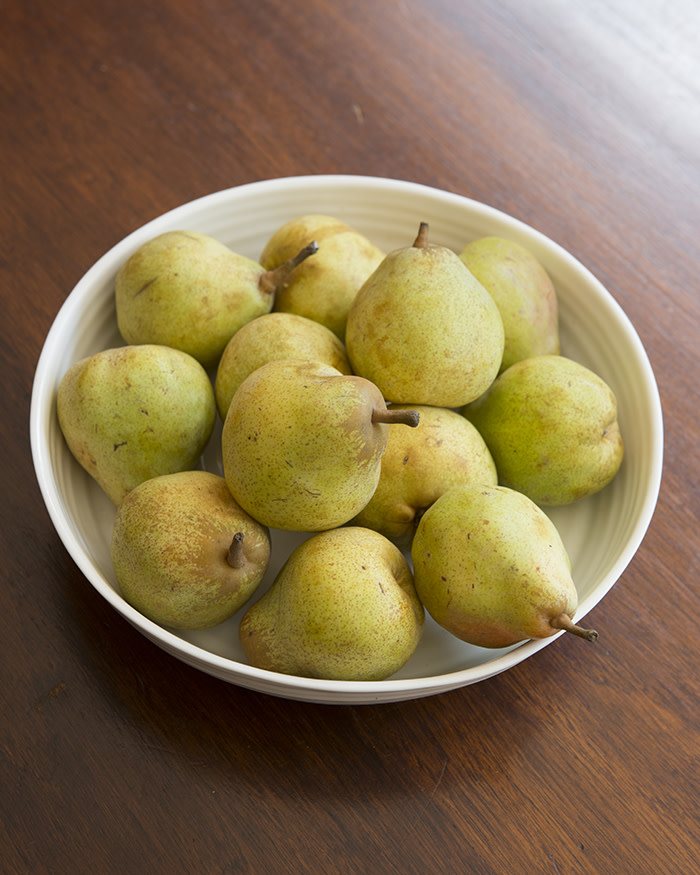Recipe: Rowley Leigh on Phillip Searle’s upside-down caramel pear cake

Simply sign up to the Life & Arts myFT Digest -- delivered directly to your inbox.
I like to think I publish original recipes. This is, of course, an entirely disingenuous remark. Almost all my recipes are hand-me-downs and adaptations of a great tradition. (“I tweaked the recipe” is a favourite claim of all cookery writers). Anyone who claims anything different is merely claiming that the acorn has fallen further away from the tree. And yet the quantities and the methods that I outline are the result of my own labours and not simply lifted from another’s work.
Until today. This recipe was given to me by Simon Hopkinson. He got it from his friend Gay Bilson, another great cook. But it is not hers either. She got it from an Australian food magazine and they got it from Phillip Searle, who really is the “onlie begetter”, although he may acknowledge some antecedent for his spectacular creation. Searle is revered by a small coterie of Australian cooks, famous for his single-minded perfectionism and technical brilliance. His checkerboard ice cream, a stunning mosaic of pineapple sorbet and star anise ice cream intersected by a thin border of liquorice, is the stuff of legend. It was found on the menu at his Oasis Seros restaurant in Sydney and subsequently at Vulcans, his restaurant in Blackheath, a town in the Blue Mountains. Such was the virtuosity of this dish that I am not sure many chefs have tried to copy it.
This cake has many of Searle’s virtues but nothing like the same degree of difficulty. The only requirements are a little courage in taking the caramel to a sufficient darkness and a great deal of patience, as the total cooking time is a minimum of five hours. It is worth the wait.
Phillip Searle’s upside-down pear cake
I use a 24cm round cake tin, although both Gay Bilson and Phillip Searle recommend a square one, mainly I think for aesthetic reasons. The use of a tin with a removable base is strongly discouraged. The pears may be prepared a day or two ahead of the cake as they need hours to bake.

Ingredients
For the pears
- Peel and halve pears but leave the core. Place cut side down in a baking dish in one layer. Add the sugar, lemon juice and wine. Cover tightly with foil and bake in the oven for at least three hours at 150C. Cool, remove cores and the strings that reach to the stem. Strain off cooking liquor, reserve, either to reduce and pour over the cake or to use for something else. The pears must be very well drained.
Caramel
- Stir the sugar and water until the sugar is dissolved and when beginning to boil, brush down the sides of the pan with cold water in order to dissolve any sugar crystals that have formed. Take the caramel to a very dark colour and tip into the cake tin immediately. Caramel is dangerously hot, so be very careful. Tip the cake tin in order to coat the base and sides evenly, and to the rim. And work quickly.
- Cover the base of the caramelised pan with the pear halves, which have been drained of all baking juices. Place them rounded side down, fitting them very tightly together, even squashing them against each other without damaging their shape. This is pivotal to the beauty of the cake when it is unmoulded.
Cake
Oven: 160C, without fan
- Grind the almonds, hazelnuts and coconut in a food processor until they are a coarse meal, then add half the flour and process further to a medium meal. Add this to the rest of the flour.
- Whisk very soft butter with the sugar and the orange rind in an electric beater until very light, fluffy and increased in volume — this takes at least eight minutes and the lightness is pivotal to the success of the cake. A little at a time, add the eggs so that they incorporate properly and there is no separation. Fold through the flour, nut and coconut mixture.
- Turn the cake batter on to the pears in the cake pan and tap the pan sharply to settle the mixture. Smooth the top. Place the cake tin in a shallow baking pan to which you will add a thin layer of water, which may need topping up after an hour. Bake for two hours.
- If the surface of the cake seems too dry, or to be growing too dark, place a sheet of aluminium foil loosely over the top. The rise should be very good but do not disturb the cake if possible during the cooking process.
- Leave the cake in the pan until you are going to present it. To unmould, dip the tin in boiling water for a long moment. Pat the tin dry, cover with a large plate and turn over, letting the cake sink gently down on to the plate. Lift off the tin: the caramel will have dissolved into the pears and coloured them beautifully. I serve the cake with crème fraîche or whipped cream rather than thick double cream, but you may happily disagree.
Follow @FTMag on Twitter to find out about our latest stories first. Subscribe to FT Life on YouTube for the latest FT Weekend videosË◊
Comments